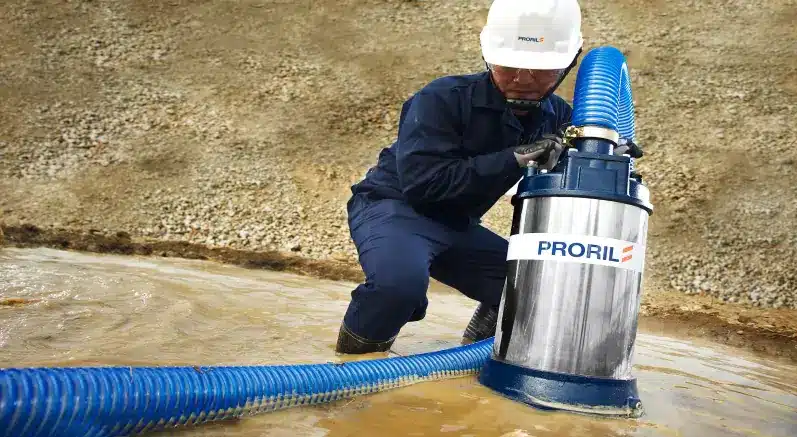Dewatering Pumps
A deep hole is dug in a designated area and a round liner with slots around the sides is inserted, allowing groundwater to seep through. The submersible pump is placed at the bottom of the hole, and when the water rises to a certain level, the pump sends it out following a centrifugal pump working principle.
Gears are mounted above each other within the head with one being driven by the motor. They are timed to mesh with fluid flowing into the open cavities, rotated in between the teeth and casing and transferred to the outlet. Fluid travels between cavities within the teeth and cavity. The teeth trap the fluid as they rotate. As a fluid chooses the path of least resistance fluid flows towards the discharge via the meshed parts.
Sewage Cutter Pumps
Proril cutter pumps are used to reduce the size of solids found in sewage or wastewater. The GOCUT series feature a chopper plate at the suction and tungsten carbide alloy brazed on the vanes of a semi-open channel impeller.
The cutter pump’s impeller drives the rotating cutting action while the chopper plate is mounted at the pumps suction inlet. Working in tandem, the suction plate and impeller imitate a scissor. As the impeller rotates against the suction plate, solids entering the pump are cut into pieces that are fine enough for the pump to move.
Cutter pumps are typically used to address clogs and rags faced by typical centrifugal pumps.
Slurry Agitator Pumps
Proril slurry pumps are equipped with an agitator that delivers kinetic energy (energy of motion) to solids surrounding the pump intake, re-suspending them into a fluid state which would have otherwise buried and starved the pump of liquid. The solids are pulled into the submersible slurry pump and pushed on through the discharge, keeping the intake clear and free of slurry accumulation. Meanwhile, a submersible slurry pump without mechanical agitation will only pump the water, leaving the solids behind to accumulate around your pump intake, and eventually starve the pump by blocking the intake.






